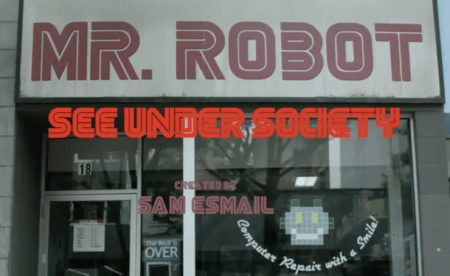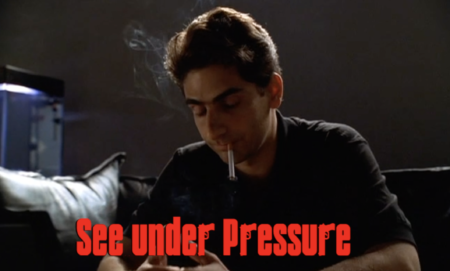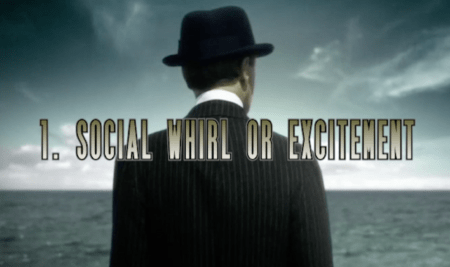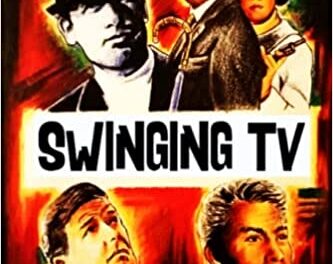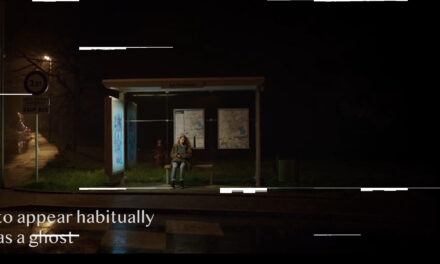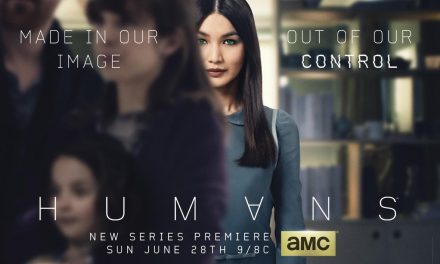As a film, television and digital media scholar, videographic criticism is a format that I was aware of but had not yet put into practice. My interest in this medium led me to Ariel Avissar’s “TV Dictionary” which for me became a form of practical access into this world of videographic criticism. Participants familiar and new to this medium create content through a specific rubric, or algorithmic guidance: a tv show; a specific word that captures the show’s essence, and the dictionary definitions of the word over scenes or a scene from the programme. The advantage of this structure enables what could be an overwhelming experience (to new practitioners), a specific route into the exciting format of videographic criticism.
In 2021 I had just finished watching Mr Robot from beginning to end. It is an intelligent programme that is also richer for its constraints of a four-season run. Creator Sam Esmail was vocal about how he envisioned the end of the show from the beginning and was adamant about being respectful to the characters and audience by not having the programme overstay its welcome, like so many can do. The impact of the finale required some unlearning about everything I thought I understood about the programme in previous seasons, creating a type of fandom itch that the TV Dictionary seemed to satisfy. I wanted to show appreciation to the programme without giving anything away to new audiences. As scholars like Henry Jenkins have discussed for some time now, fandom, or fan made content to celebrate films, television, gaming (along with other visual media) has been an outlet for viewers since the launch of video sharing platforms like YouTube, bringing new audiences together. Through research into videographic criticism I have learnt that one of the strengths is its ability to blend scholarly and non-scholarly creators into the same space, enabling them to learn from one another. Videographic criticism provides academic scholars with the opportunity to share work with a wider more general audience and vice versa.
The TV Dictionary exemplifies this with video entries from well-known and upcoming academics and non-scholarly artists, sharing work within the same collection. Being open to everyone allows an eclectic cohort of new and established creators to come together and extend the visibility of this community. My first entry for Mr Robot instantly had a platform and audience made up of other participants.
My choice of programme was one that had not yet been claimed by another user, while the word “Society” seemed fitting, as the hacker anarchists within Mr Robot go by the “F-Society” alias. In terms of clips, I was limited to what was available on YouTube (having streamed the programme on Amazon Prime). Using the 4K Video Downloader app (to capture these clips), I proceeded to suture them on iMovie, and Keynote (for the text), a process that I have since learnt is incredibly convoluted in comparison to other software applications. Having now purchased MacDVD Ripper and Adobe Premiere Pro I can see how essential these tools are for practitioners creating content daily. It was also important for me to incorporate a similar font used for the programmes credit sequence, a self-imposed rule which I used for future submissions.
The Mr Robot entry uses a montage structure set against Mac Quayle’s haunting electronic score. The music is fairly fast paced so I endeavoured to try and match the rhythm of editing. For my second entry, I picked a more light-hearted programme in the form of Frasier.
The word “Unsettled” appealed to me as Frasier is something of a tortured soul whose ethics and ambition often seems to stand in the way of his happiness. Like so many great sitcoms, there is a sense of characters being trapped in patterns that they cannot escape. I also liked how the word “Unsettled” looks similar to Seattle where Frasier lives, so I wanted to emphasise this by having the word appear under the Seattle skyline credit sequence.
My following three entries: The Sopranos, Luther and Boardwalk Empire have adopted a slightly different format of unedited sequences. The violent, darkly comedic and intertextual confrontation between Christopher and the bakery clerk in The Sopranos was one of the many remembered moments in David Chase’s acclaimed series. It simultaneously mixes menace with insecurity, everyday frustrations (of waiting in line), while nodding towards Martin Scorsese’s Goodfellas in which actor Michael Imperioli is victim to a situation which in this clip he is now instigating. His final line “it happens,” after shooting a bakery clerk in the foot for a trivial reason seems to confirm this.
As such it was a strong choice and the word “Pressure” written in The Sopranos mobster font seemed to fit well with each moment or exchange of dialogue.
I followed a similar structure for the disturbing “Dark” murder that takes place in Luther onboard a night bus, and like The Sopranos framed it within an edited title sequence, to give the essence of a miniature episode.
For my last clip to date (and first one using Adobe), I focused primarily on the credit sequence of Boardwalk Empire with the work “Racket” to capture the essence of the prohibition era and narrative.
This was inspired by two of Ariel’s videos: Dexter, which also uses the credit sequence and The Wire, which puts the chosen word at the end after the definitions.
I have thoroughly enjoyed this process and am keen to learn more about it. I am now working on a new piece of videographic criticism to present for the international Screen Studies Conference, which the TV Dictionary has given me the confidence and knowledge to undertake.
There are many hidden gems within the TV Dictionary, Charlotte Devon Scurlock’s Sharp Objects is one of these:
Daniel Paul O’Brien is a lecturer in Film and Digital Media at the University of Essex. He has a PhD in Film and Television Studies from the University of Glasgow and an MA in Film and Screen Cultures from Goldsmiths. His interest and areas of research span across film, television, interactive media art and computer game studies. He has published work in all these areas and is working on a book titled Postphenomenology and Narrative Across Cinema, Interactive Art, and Gaming: Embodying Screen and Story, under contract with Edinburgh University Press.


